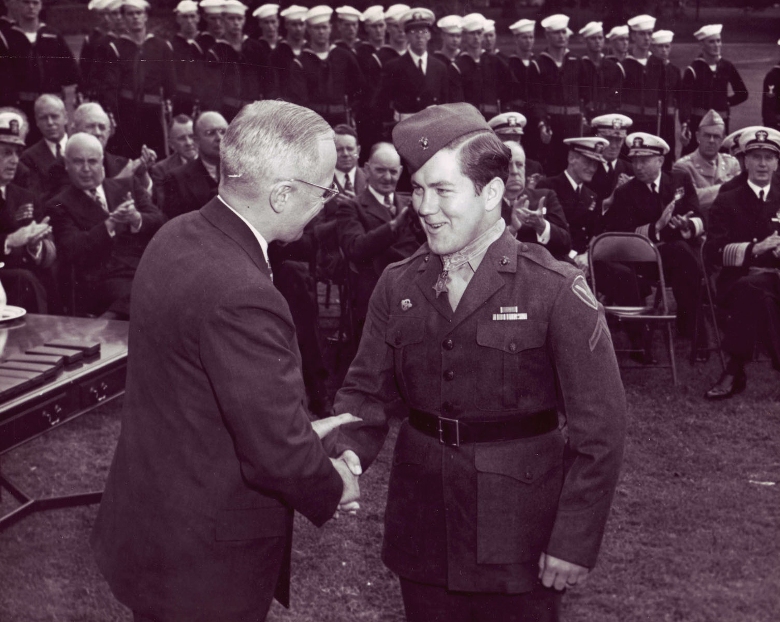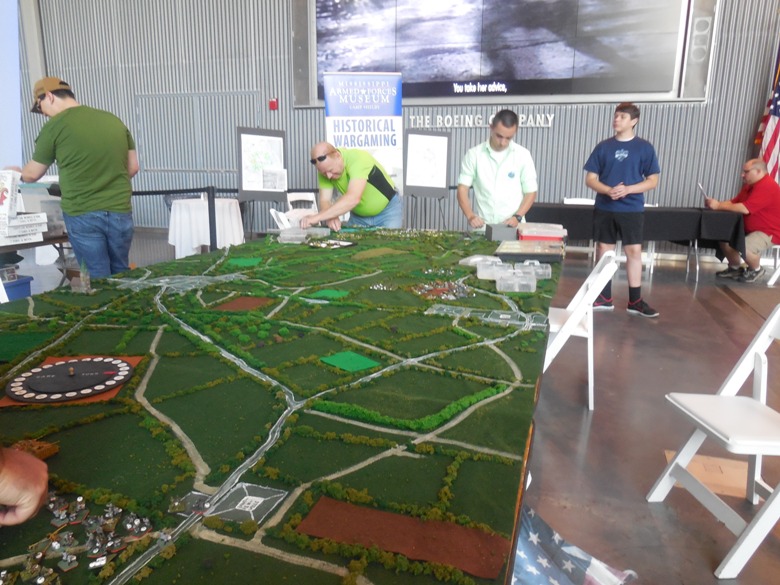Families love the greatly expanded National World War II Museum in New Orleans


By Eileen Ogintz
Tribune Content Agency
What are your 14 year olds up to?
Jack Lucas was in the Marines. Yes, he’d lied about his age to join during World War II, but just three years later he won the Congressional Medal of Honor for using his own body to shield three members of his squad from two grenades during the Iwo Jima campaign, nearly getting killed when one exploded.
He survived and became the youngest Marine ever to receive the United States’ highest military honor. The wallet he had in his pocket that day tells just one of the many stories at the National World War II Museum in New Orleans, which makes the war real for a generation born long after it was fought.
“In school and on paper, the scale of the war tends to be understated, and is hard to emphasize,” said Stefan Suazo, an 11th-grader who serves as a member of the museum’s youth Victory Corps volunteers.
“In the museum, however, artifacts, veterans and vehicles provide an in-depth look at the sheer magnitude of the event.”
“Speak to the veterans (who are volunteers at the museum),” he suggests. “They are living history, and will be more than happy to share their experiences. They give first-hand accounts of the war, and provide the best information available.”
“This museum really puts you in the shoes of the people who lived the events,” added Ruth Lee, also a junior volunteer. “You’ll learn a lot!”
Like the fact that fewer than 500 soldiers were awarded the Medal of Honor in World War II. You can see all of their faces in one exhibit.

There are dented helmets, letters home, photographs, flight jackets and K rations, complete with chocolate bars and gum. According to the U.S. Department of Veterans Affairs, more than 16 million Americans served in World War II and the museum honors all of them, which is especially poignant as we pause this Veterans Day to commemorate the sacrifices of all those who fought for their country.
There’s a Kids Corner on the museum’s website where kids can make their own WWII-era patch. (Many are on exhibit. Try sending a message with Navy flags, or make a propaganda poster.) There’s also a scavenger hunt designed for school groups, but it’s fun for families, too, as they make their way through the museum. (How long did it take for Andrew Higgins to design and build this special landing craft? Just 61 hours!)
Higgins, we learn, was from New Orleans and had been manufacturing shallow-water work boats to support gas exploration in the Louisiana bayous. He adapted his Eureka Boat to meet the military’s need for a landing craft. By using Higgins Boats, armies could unload across an open beach and have more options in choosing their attack points. In 1938, a small workforce of only 75 workers grew to more than 20,000 by 1943. The Higgins workforce was the first in New Orleans to be racially integrated. His employees included undrafted white males, women, African-Americans, the elderly and the physically disabled.
The National World War II Museum was founded in 2000 as The National D-Day Museum and is still growing. The museum has become a top tourist attraction, many of its visitors coming from outside of New Orleans. In 2009, the Solomon Victory Theater complex opened, featuring the exclusive 4-D film, “Beyond All Boundaries,” which is produced and narrated by Tom Hanks. In 2013, the US Freedom Pavilion: The Boeing Center opened with eye level views of WWII-era aircraft.

The museum’s newest pavilion, The Campaigns of Courage Pavilion: The Road to Berlin, will open on the weekend of December 11; the Liberation Pavilion is scheduled to open in 2016 and will explore the post-war era and the war’s continuing influence in our society and world.
Currently housed in three buildings, museum exhibits are arranged around central themes of the war and offer visitors an opportunity to experience the war through the eyes of the men and women who lived it with personal vignettes and interactive elements throughout. Still, this is the kind of museum you need to explain to your kids as you go along — why we fought this war, how young the soldiers were and what sacrifices were made at home.
There are oral history stations where visitors can stop to listen to a soldier’s account of D Day. “If we stood there, we were going to die. … We just had to get to the bottom of the cliffs,” said Lt. Col Bill Friedman. You can listen to more stories in the museum’s digital collection before you visit.
Show the kids what soldiers carried in their backpacks — a towel, a spoon, toilet paper, first-aid packet and pictures from home. See what it was like for the nearly 120,000 Japanese-American families who were forced from their homes into internment camps in the exhibit “From Barbed Wire to Battlefields: Japanese American Experiences in WWII.” Despite this treatment, Some 33,000 Japanese-Americans served their country during World War II.
The Education Department offers family workshops throughout the year to encourage kids and their families to explore the life and lessons of WWII with hands-on exploration of artifacts and activities.
There are also activities to do at home — like Kitchen Memories where kids are encouraged to talk to elderly relatives and friends about their memories about food during World War II.
“We are talking about normal people living through extraordinary circumstances,” said Collin Makamson, who oversees the family programs.
Heroes all.
© 2014 EILEEN OGINTZ, DISTRIBUTED BY TRIBUNE CONTENT AGENCY, LLC.
